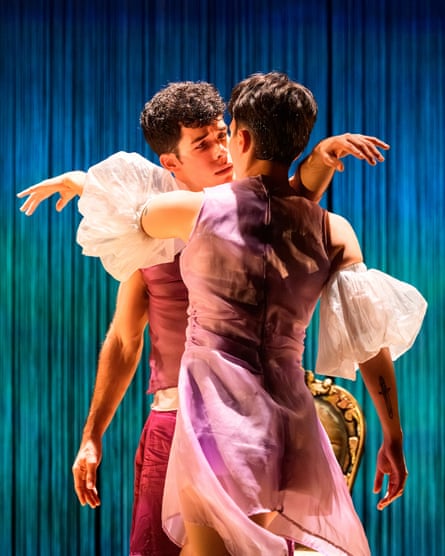Choreographer Shobana Jeyasingh originally moved to the UK in the early 1980s to study Shakespeare, so it’s safe to say she has deeply engaged with the playwright. It’s a shame then that her latest work, We Caliban, inspired by The Tempest, doesn’t manage to convey her rich ideas around this key character. We begin with a letter from Elizabeth I to Walter Raleigh from 1584, giving him licence to set out and conquer foreign lands, then maps of Caribbean islands, their original names crossed out and replaced with Anguilla, Grenada, Barbuda. Jeyasingh’s postcolonial take on the text seems clear, Prospero the invader forcing native Caliban into servitude. But having established this on stage, the idea dissipates into something much more impressionistic, the conceptual thrust is lost. We’re led into a story and then left stranded, like a Milanese duke and his daughter on a remote island.

Jeyasingh’s dancing is always well wrought. Her background is in the Indian classical form bharatanatyam, melded with western contemporary dance, and she has a classicist’s feel for proportion and precision, an acute (no pun intended) sense of angle and line. Character is less of a concern – the dancers aren’t “acting”, as such – and the effect is flat. Prospero, with his book and his staff, controls in fairly benign fashion. Caliban gets more interesting. Dancer Raúl Reinoso Acanda (formerly of Cuba’s Acosta Danza) has two key duets: first with Miranda, where there is resistance, or resentment, perhaps, but also a connection between them that leads to tenderness. Then after the colonists have left, a second enigmatic duet (with an unnamed woman, one of the island’s original inhabitants). This one is cool and careful, the two are fascinated, yet wary and distant – their fingers only just touching in a long stretched pose. They look at the audience rather than each other, but they seem to have a kind of mutual understanding. What’s going on here? The fallout, perhaps of trying to rebuild yourself when you’ve been stripped of what was essentially you? Caliban now trying to work out how to be himself, how to live, how to trust?
The music, by Thierry Pécou, is an unpredictable patchwork of melodies, textures, sounds and silences, which never lets you get comfortable; fitting for a work that’s frustratingly hard to get a handle on.

 3 hours ago
8
3 hours ago
8

















































